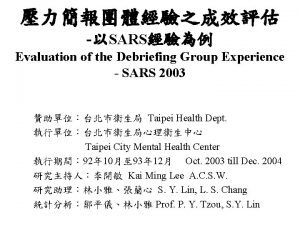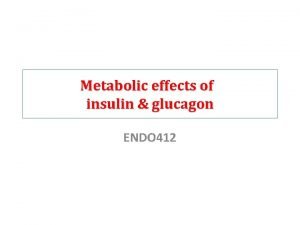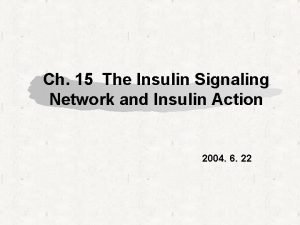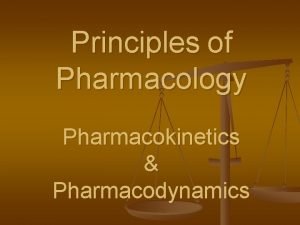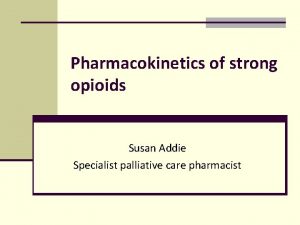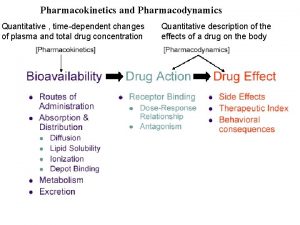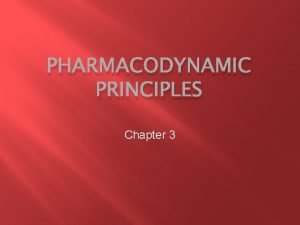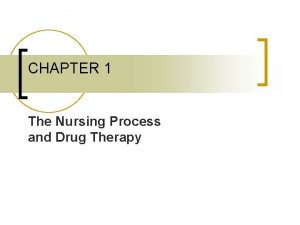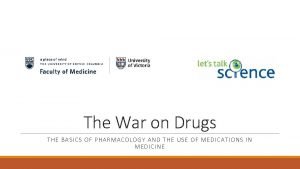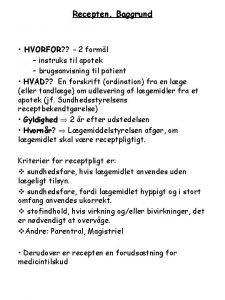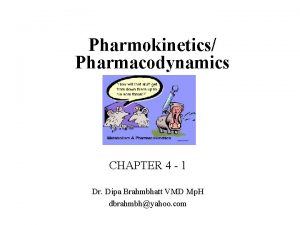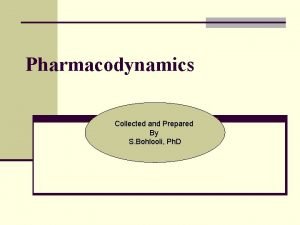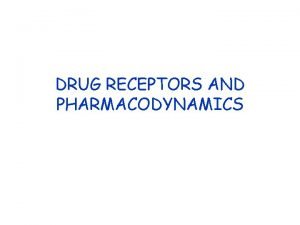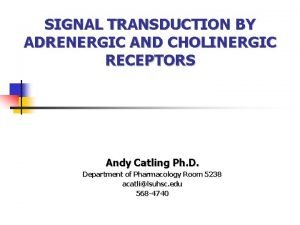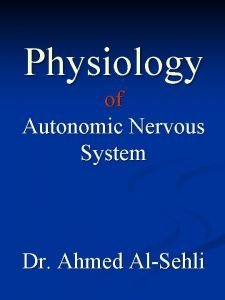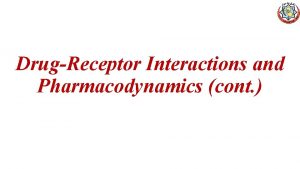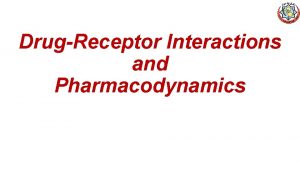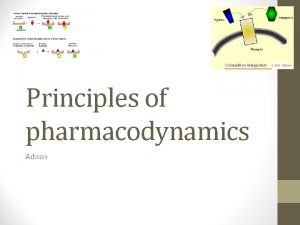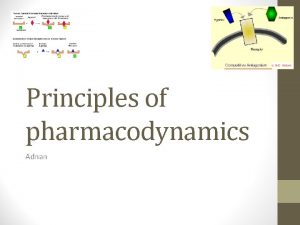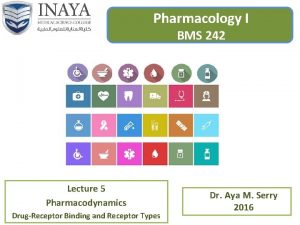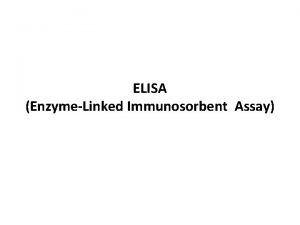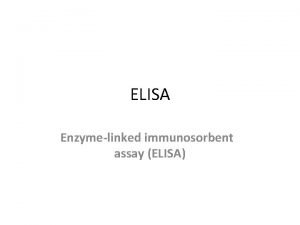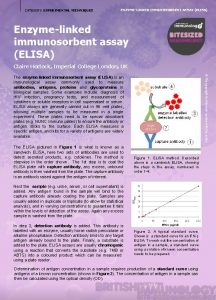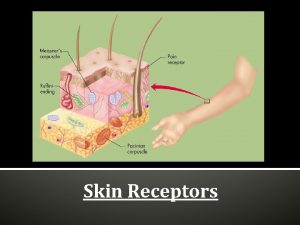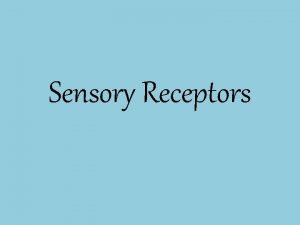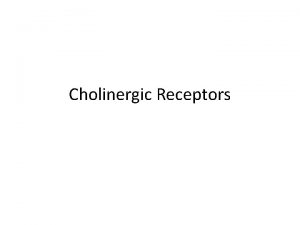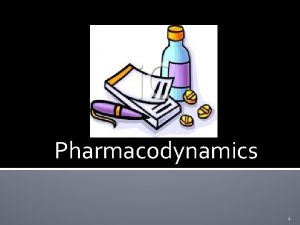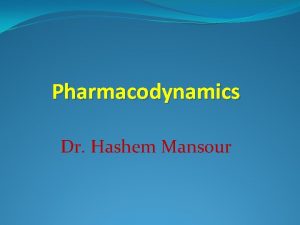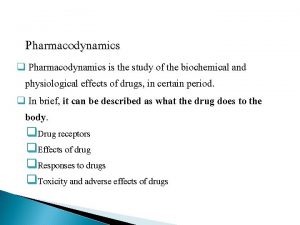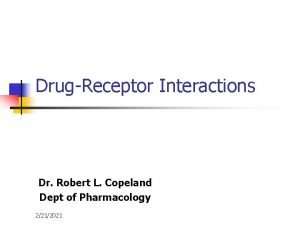DrugReceptor Interactions and Pharmacodynamics cont Enzymelinked receptors Insulin
















- Slides: 16

Drug-Receptor Interactions and Pharmacodynamics (cont. )

Enzyme-linked receptors (Insulin Receptors) • Dimers or multisubunits • Lasts min to hrs • Ex. , epidermal growth factor(EGF), platelet-derived growth factor (PDGF), atrial natriuretic peptide (ANP), insulin & others

Intracellular receptors • Takes hours to days to give response • Examples: steroid H, structural pts, Es, RNA & ribosomes

Characteristics of Signal Transduction ✓ Signal Amplification e. g. albuterol ✓ Spare receptors insulin spare Rs = 99% β-adrenoceptors = 5 -10%

Desensitization, & Down-Regulation of Receptors • Tachyphlaxis: repeated administration of the agonist lead to decrease in responsiveness of Rs • Refractory • Up-regulation of receptors

Dose-Response Relationships • Graded dose-response curve (DRC) • Potency amount of drug required to produce a given response & used to determine ED 50 Candesartan 4 – 32 mg Irbisartan 75 – 300 mg • Efficacy: the magnitude of response • Maximal efficacy Emax

Dose-Response Relationships


Effect of Drug Concentration on Receptor Binding

Relationship of Drug Binding to Pharmacologic Effect ❖ Kd value used to determine affinity ❖ The higher the Kd, the weaker the interaction, the lower the affinity ❖ The magnitude of response is proportional to the amount of Rs bound ❖ Emax represent full occupation of Rs ❖ Affinity should be related to potency of drug for causing physiologic response

Intrinsic activity represents the ability of a D to act as: I- Full Agonists intrin. activity =1 II- Partial Agonists intrin. activity > 0 & <1 III- Inverse Agonists Spontaneous conversion from R to R* intrin. activity < 0

Effects of Partial Agonists

Competitive antagonism • Competitive --- Surmountable • Competes with agonist in reversible fashion for same receptor site • Necessary to have higher concentration of agonist to achieve same response

Noncompetitive antagonism • Noncompetitve --Insurmountable • Antagonist binds to a site different to that of an agonist • No matter how much agonist -- antagonism cannot be overcome

Antagonists I- Competitive Antagonists II- Irreversible Antagonists III- Allosteric Antagonists IV- Functional or Chemical Antagonists

Therapeutic Index
 Cont or cont'd
Cont or cont'd Cont or cont'd
Cont or cont'd Synthesis of insulin
Synthesis of insulin Insulin and insulin receptor
Insulin and insulin receptor Factors affecting drug metabolism slideshare
Factors affecting drug metabolism slideshare Difference between pharmacokinetics and pharmacodynamics
Difference between pharmacokinetics and pharmacodynamics Pharmacokinetics vs pharmacodynamics
Pharmacokinetics vs pharmacodynamics Pharmacodynamics
Pharmacodynamics Define pharmacodynamics
Define pharmacodynamics Pharmacodynamics
Pharmacodynamics Pharmacodynamics
Pharmacodynamics Andy meddicm
Andy meddicm Pharmacodynamics
Pharmacodynamics Graded dose response curve
Graded dose response curve Accounting information system chapter 1
Accounting information system chapter 1 Difference between alpha and beta receptors
Difference between alpha and beta receptors Orbelli phenomenon
Orbelli phenomenon
